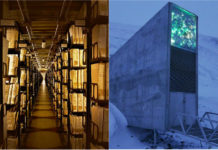Scientists at NASA have built a stopwatch timer that can measure a fraction of a billionth of a second, which can help to obtain precise height measurements of the Earth’s surfaces including ice, glaciers, forests, and sea.
Thanks to its incredibly precise time measurement, the timer enables scientists to calculate the distance between a satellite and the Earth, based on which they can precisely record the height of the Earth’s surfaces.
Engineers at NASA’s Goddard Space Flight Centre, US have built the timer for the Ice, Cloud and land Elevation Satellite-2 (ICESat-2), which is scheduled for launch in 2018. The timer will use six green laser beams to measure height.
“Light moves really, really fast, and if you’re going to use it to measure something to a couple of centimetres, you’d better have a really, really good clock,” said Tom Neumann, ICESat-2’s deputy project scientist.
ICESat-2 could only measure elevation to within about 500 feet if its stopwatch kept time even to a highly accurate millionth of a second. This does not suffice when the goal is to record subtle changes as ice sheets melt or sea ice thins.
To attain the needed precision of a fraction of a billionth of a second, engineers had to develop and build their own series of clocks on the satellite’s instrument – the Advanced Topographic Laser Altimeter System, or ATLAS. This timing accuracy will allow researchers to measure heights to within about two inches, said NASA in a statement on Monday.
ATLAS pulses beams of laser light to the ground and then records how long it takes each photon to return. Considering this recorded time along with the speed of light, scientists can tell how far the laser travelled. This flight distance, combined with the knowledge of the exact position of the satellite in space, tells researchers the height of the Earth’s surface below.
The timing clock consists of several parts to better keep track of time. There is a GPS receiver, which ticks off every second – a coarse clock that tells time for the satellite.



























